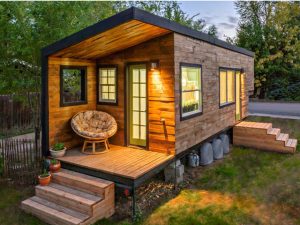Tag: affordable-housing
November 24, 2020
Indigenous Peoples: Centuries of Sustainable Living
By Alexa Roccanova Amidst a convergence of contemporary crises, private and public actors alike have championed sustainability as the ultimate goal for an environmentally, socially, and economically sound future. We’ve witnessed an inundation of seemingly “sustainable” alternatives for products, technologies, lifestyles, and systems that pose only slightly better versions of the status-quo — alternatives that by themselves, without a significant shift in the dynamic of our dominant systems, will not be enough to effectively mitigate climate change. But there exist generations of people who have already been living sustainably for centuries. Indigenous peoples all over the world have been tending to the Earth, conserving local ecosystems, preserving biodiversity, and maintaining their ancestral cosmovisions, knowledges, and practices, despite incessant efforts by colonizer nations and institutions to displace, assimilate, and terminate them. The survival of their communities and lifeways is itself a testament to the sustainability of their culturally and spiritually guided relations with the environment.
“Humankind has not woven the web of life. We are but one thread within it. Whatever we do to the web, we do to ourselves. All things are bound together. All things connect.”– Chief Seattle, Duwamish
(more…)
But there exist generations of people who have already been living sustainably for centuries. Indigenous peoples all over the world have been tending to the Earth, conserving local ecosystems, preserving biodiversity, and maintaining their ancestral cosmovisions, knowledges, and practices, despite incessant efforts by colonizer nations and institutions to displace, assimilate, and terminate them. The survival of their communities and lifeways is itself a testament to the sustainability of their culturally and spiritually guided relations with the environment.
“Humankind has not woven the web of life. We are but one thread within it. Whatever we do to the web, we do to ourselves. All things are bound together. All things connect.”– Chief Seattle, Duwamish
(more…)
February 5, 2019
Monthly Forum: Affordable Housing Overview, The Path to Better Affordable Housing
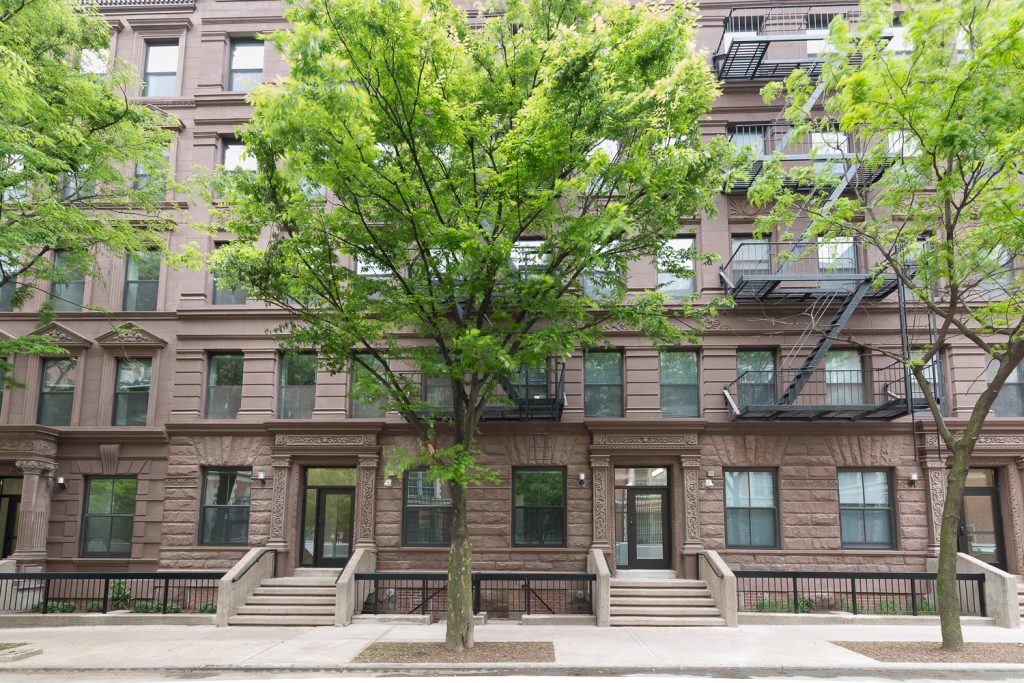
The City, State, and Federal governments have provided subsidies for affordable housing for decades, but this housing is not built by them, it is built by developers. Many years ago, the belief was to build the housing as quickly as possible, which caused much affordable housing to be of modest yet horribly inefficient quality. Today, such housing meets or exceeds most sustainability standards, and tonight’s developers were among the leaders in this change over the years, and remain there to this day. Listen to the process and progress in this field, and decide if you might want to join this field by listening to these accomplished leaders.
Our speakers will include:
Les Bluestone has been involved in real estate development and construction industries for over 35 years working in New YOrk CIty and surrounding areas. Co-founder of Blue Sea Development Company and Blue Sea Construction Co., his firms developed and built New York State’s first affordable Energy Star Homes and New York State’s first three affordable LEED Platinum multifamily buildings. A former Board Chair of Habitat for Humanity NYC, Les is a founding board member of the Center for Active Design, sits on the boards of the New York State Association for Affordable Housing, the NYC Workforce Investment Board, and was appointed by the Governor to the NYSERDA Green Jobs Green New York Advisory Council.
Luke Falk is Vice President of Technology for Related Companies. His group drives technological innovation (including capabilities around energy management, marketing, adtech, IoT, and integrated experiences) at Hudson Yards, the largest private real estate development in the history of the US. Previously he was the Assistant Vice President for Sustainability in Related’s New York Development Group. In that role he developed distributed and renewable energy generation projects, and improved the energy performance and resilience of new and existing developments. He led the sustainability design of over a dozen LEED silver, gold and platinum buildings representing over $5B in capital investment including the tallest passive house in the world for Cornell Tech in New York City.
December 11, 2018
October Forum Recap: Passive House High Rise
By Jessica Bartolini; Photos by Olha Peralta
High-rise Passive House buildings were the subject of GreenHomeNYC’s monthly forum in October. The three presentations provided attendees with an overview of what implementing Passive House standards looks like in real life.
Gahl Sorkin Spanier of the Association for Energy Affordability (AEA) kicked off the evening with a presentation on how best to go about building a high-rise Passive House (PH) project. Kevin Brennan, formerly of AEA and now co-owner of Brennan Brennan Insulation and Air tightness, joined Gahl in sharing learnings from Passive House projects and training. AEA recently worked on an 86-unit PH affordable residence for seniors in Queens, in partnership with the non-profit organization HANAC.
 Kevin Brennan & Gahl Spanier
Kevin Brennan & Gahl SpanierGahl emphasized the importance of holding training for the various trades building a PH project, noting that the main sources of air leakage are often at details where trade responsibilities are unclear. It is key, therefore, that training not only instill understanding of PH requirements, but also recognition of the importance of collaboration and coordinating across trades. Another takeaway from AEA’s experience is that training should not include more theory or math than necessary. Gahl noted that any general contractor personnel in a supervisory role should not only receive training, but also be empowered to teach others.
May 29, 2018
March Forum Recap: Sustainable Policy 201
by Miaoru Guan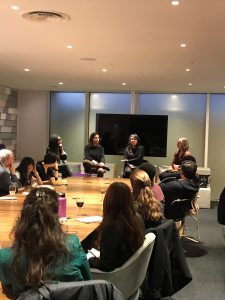 The Sustainable Policy 201 Forum featured four speakers working towards sustainable, affordable housing through diverse but connected roles. Michelle Andry works at New York State Energy Research and Development Authority (NYSERDA), where she focuses on energy efficiency, clean energy, and energy affordability initiatives impacting low-income housing. Francesca Camillo, Project Manager at NYC Department of Housing Preservation and Development (HPD), assists building owners in procuring funding for rehabilitation. Elizabeth Kelly, Manager of Sustainability Programs at The Community Preservation Corporation (CPC), leverages private capital to support sustainable multi-family housing and community revitalization projects. Andrea Mancino is Director of New Construction at Bright Power, and manages team members working on ground-up new construction and commissioning projects.
The panelists discussed how effective policy can encourage wider adoption of sustainable practices in housing by facilitating financing from government sources. For example, to qualify for government funding, new construction and rehabilitation buildings must receive building certification, such as Enterprise Green Communities or LEED certification. Mancino mentioned that achieving certification as an Enterprise Green Community requires buildings to outperform standard building code by 15%. Kelly discussed how these standards help the CPC and private lenders ensure projects have fulfilled a sustainability checklist, reducing the time projects spend in due diligence. Andry added that certified buildings are eligible for NYSERDA grants as well as HPD funding.
(more…)
The Sustainable Policy 201 Forum featured four speakers working towards sustainable, affordable housing through diverse but connected roles. Michelle Andry works at New York State Energy Research and Development Authority (NYSERDA), where she focuses on energy efficiency, clean energy, and energy affordability initiatives impacting low-income housing. Francesca Camillo, Project Manager at NYC Department of Housing Preservation and Development (HPD), assists building owners in procuring funding for rehabilitation. Elizabeth Kelly, Manager of Sustainability Programs at The Community Preservation Corporation (CPC), leverages private capital to support sustainable multi-family housing and community revitalization projects. Andrea Mancino is Director of New Construction at Bright Power, and manages team members working on ground-up new construction and commissioning projects.
The panelists discussed how effective policy can encourage wider adoption of sustainable practices in housing by facilitating financing from government sources. For example, to qualify for government funding, new construction and rehabilitation buildings must receive building certification, such as Enterprise Green Communities or LEED certification. Mancino mentioned that achieving certification as an Enterprise Green Community requires buildings to outperform standard building code by 15%. Kelly discussed how these standards help the CPC and private lenders ensure projects have fulfilled a sustainability checklist, reducing the time projects spend in due diligence. Andry added that certified buildings are eligible for NYSERDA grants as well as HPD funding.
(more…)
June 4, 2016
April Forum Recap: Indoor Air Quality
by Jaime Alvarez How do the buildings we inhabit affect our well being? Should we be concerned with the health impacts of the construction materials that go into them? While we are well aware of the hazards of outdoor air pollution and understand its sources, we may understand less about indoor air quality (IAQ). The April Forum provided important insights into what to look out for and what’s being done to address it.
Three experienced professionals including a building consultant, a public advocate, and a medical doctor gathered at the office of Steven Winter Associates to inform us of indoor air quality concerns, tools for measurement, and proven results from green buildings. (more…)
How do the buildings we inhabit affect our well being? Should we be concerned with the health impacts of the construction materials that go into them? While we are well aware of the hazards of outdoor air pollution and understand its sources, we may understand less about indoor air quality (IAQ). The April Forum provided important insights into what to look out for and what’s being done to address it.
Three experienced professionals including a building consultant, a public advocate, and a medical doctor gathered at the office of Steven Winter Associates to inform us of indoor air quality concerns, tools for measurement, and proven results from green buildings. (more…)
May 22, 2016
Living it up in Tiny Homes
By Samantha Lipsky As spring cleaning season concludes, many declutter devotees are likely contemplating, “Could I make do with less?” And, depending on the magnitude of decluttering, “How much space is needed to live a full life?” Tiny Life is a social movement and seeks to address such issues through lifestyle simplification. Inhabiting smaller, and sometimes mobile, spaces allows many the freedom to prioritize other aspects of life. Living in a smaller structure can free up finances and responsibilities, which in turn, renders greater flexibility in job choice and travel. What are Tiny Homes? Tiny homes can include micro-apartments, trailers, micro-homes, yurts, houseboats, and garages. Simply put, according to the television show, Tiny House Nation, the average home is 2300 square feet and tiny homes are roughly one-tenth that size. Carpenter and Assistant Organizer of the Meetup, NYC Tiny House Enthusiasts (NYCTHE), Tim Tedesco attests that there are many types of tiny residences. “Living in NYC is tiny living. Most people already live in tiny homes like within a small apartment and bedrooms within a shared space.” He elaborates that residents learn how to create a well-organized, optimally-designed home, in which each and every space has a function. (more…)February 24, 2016
January Forum Recap: Sustainability Trends from the Green Catwalk
by Megan Nordgrén Sustainability trends are constantly evolving and at GreenHomeNYC’s annual Green Catwalk, a number of hot topics were placed center stage as seven speakers discussed issues like carbon assets, solar technology, sustainable modular housing, green financing and benchmarking. Carbon Offsets in the Building Industry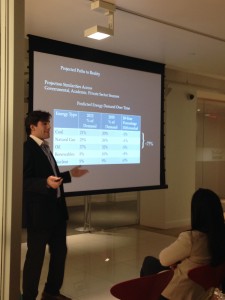 Reed Shapiro, Director of Business Development at Carbon Credit Capital, started the evening by making a case for integrating carbon offsets in the building industry. To avoid exceeding a global temperature increase of 2°C, broadly seen as the planetary tipping point for catastrophic impact from climate change, we need to look at the critical role that buildings play in greenhouse gas emissions.
Buildings make up approximately 40% of the annual 5 BT U.S. greenhouse gas emissions: 15% through manufacturing, 83% through use, and the remainder through design, distribution, on-site operations, and demolition or refurbishment.
(more…)
Reed Shapiro, Director of Business Development at Carbon Credit Capital, started the evening by making a case for integrating carbon offsets in the building industry. To avoid exceeding a global temperature increase of 2°C, broadly seen as the planetary tipping point for catastrophic impact from climate change, we need to look at the critical role that buildings play in greenhouse gas emissions.
Buildings make up approximately 40% of the annual 5 BT U.S. greenhouse gas emissions: 15% through manufacturing, 83% through use, and the remainder through design, distribution, on-site operations, and demolition or refurbishment.
(more…)
September 10, 2015
August Forum Recap: The Economic Value of Green Building
by Jaime Alvarez Two seasoned building professionals and a financier came together on Wednesday, August 19th at the GreenHomeNYC August forum held at the Hafele showroom to share their experiences regarding the economic value of green building with a full room of over 50 curious attendees. The presentations emphasized that with attention to detail, green buildings can be built affordably. Steve Bluestone of The Bluestone Organization: Making green building cost competitive Affordable housing developer, Steven Bluestone, began the discussion showing how through years of practice and commitment to constant improvement his firm has left behind stagnant building practices and forged ahead past code requirements with a simpler building process which delivers more efficient buildings with significant cost savings to tenants. For over fifty years, small to medium multi-family housing has been built using concrete masonry unit, “cinder block,” structural walls and planks for flooring and roofing. The buildings would be structurally sound, but energy efficiency suffered as a result of minimal insulation, air sealing, and “thermal bridges”— where conductive material such as concrete is exposed to outdoor weather drawing in cold temperature indoors during winter, and warmer temperatures in summer, raising heating and cooling costs.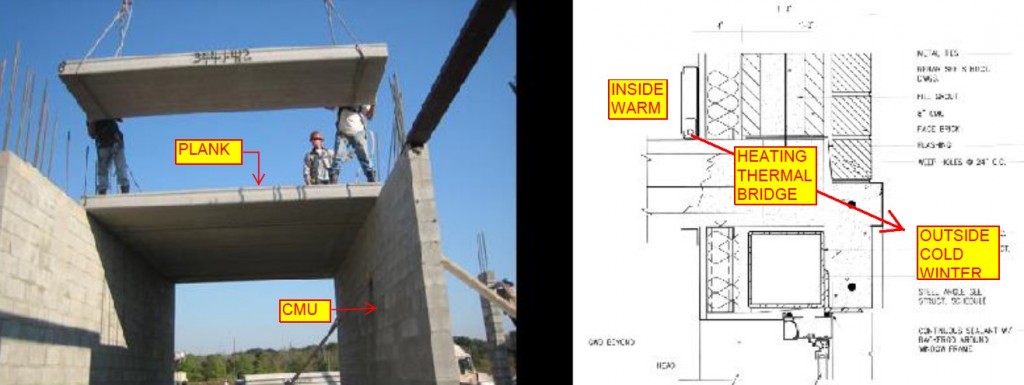 (more…)
(more…)
October 5, 2013
The Green Spotlight on BE NYC: Christopher Diamond
Countdown to BE NYC! With only days until the conference, GreenHomeNYC is shining the spotlight on the experts who will be making BE NYC an exceptional industry event!
One of the professionals participating in the conference is Christopher Diamond.
days until the conference, GreenHomeNYC is shining the spotlight on the experts who will be making BE NYC an exceptional industry event!
One of the professionals participating in the conference is Christopher Diamond.
 Chris is Director of Engineering and Technical Analysis at the New York City Energy Efficiency Corporation (NYCEEC), an independent, non-profit financial corporation established by New York City to assist the City in implementing its Greener, Greater Buildings Plan and to advance the goals of PlaNYC. NYCEEC’s mission is to support the City’s energy and climate action goals by catalyzing an energy efficiency retrofit financing market for private building owners.
Chris earned a Bachelor of Engineering (Civil) from Manhattan College, and Master of Science (Engineering) and Master of Architecture degrees from UC Berkeley. He will be one of seven industry professionals participating in the panel “Real Financing, Real Quick (Financing for People with Short Attention Spans),” which is part of BE NYC’s Multifamily track.
How did you become involved in this aspect of sustainability?
My career path seems a bit scattered, but there is a progression and along the way I’ve learned a variety of skills and perspectives that influence the work I do today. I started as a civil engineer designing gas stations in Southern California. Much of that work was tied to then-new environmental regulations including Title 24. Since the projects were small and quick paced, by the time I got to architecture school I had built more projects than most of my professors. After graduate school I worked for a boutique structural engineering firm on some high-profile projects, including Simmons Hall at MIT, the expansion to MoMA, and the Nelson Atkins Museum in Kansas City. I then transitioned my career toward sustainability and energy efficiency and worked at an architectural firm and later Steven Winter Associates. The work I do today is integrating energy efficiency design and construction into the financing process. The breadth of my previous experience helps me clearly see the big picture.
What are the main reasons that your panel at BE NYC, “Real Quick (Financing for People With Short Attention Spans),” is important to someone trying to gain a better understanding of the sustainability field at large?
The excuse not to do an energy efficiency retrofit—even one with a great payback—is often a lack of financing. NYCEEC was established to eliminate that excuse and catalyze a financing market for energy efficiency. Financing can be very specific to the type of project under consideration and oftentimes people don’t know what is available. The format and collection of speakers on this panel will give the audience a great overview of the types of financing available for different types of projects. Spoiler Alert: In the end, if there’s a project that doesn’t fit into any of the categories we discuss, people should come talk to NYCEEC.
Can you mention one or two projects you’ve been involved with at NYCEEC that are pertinent to this panel discussion?
I’ve worked on two mortgage products in particular. The first is with the NYC Housing Development Corporation (so it’s limited to affordable housing). Over the summer we closed our first deal—with Franklin Plaza Apartments, a Mitchell Lama cooperative in Harlem—that is providing additional loan proceeds to incorporate energy efficiency into major renovations that were already planned. We’ve even been able to leverage a separate loan to do extra energy efficiency measures. The energy savings of these measures will go a long way to keeping the units more affordable for a long time into the future.
Chris is Director of Engineering and Technical Analysis at the New York City Energy Efficiency Corporation (NYCEEC), an independent, non-profit financial corporation established by New York City to assist the City in implementing its Greener, Greater Buildings Plan and to advance the goals of PlaNYC. NYCEEC’s mission is to support the City’s energy and climate action goals by catalyzing an energy efficiency retrofit financing market for private building owners.
Chris earned a Bachelor of Engineering (Civil) from Manhattan College, and Master of Science (Engineering) and Master of Architecture degrees from UC Berkeley. He will be one of seven industry professionals participating in the panel “Real Financing, Real Quick (Financing for People with Short Attention Spans),” which is part of BE NYC’s Multifamily track.
How did you become involved in this aspect of sustainability?
My career path seems a bit scattered, but there is a progression and along the way I’ve learned a variety of skills and perspectives that influence the work I do today. I started as a civil engineer designing gas stations in Southern California. Much of that work was tied to then-new environmental regulations including Title 24. Since the projects were small and quick paced, by the time I got to architecture school I had built more projects than most of my professors. After graduate school I worked for a boutique structural engineering firm on some high-profile projects, including Simmons Hall at MIT, the expansion to MoMA, and the Nelson Atkins Museum in Kansas City. I then transitioned my career toward sustainability and energy efficiency and worked at an architectural firm and later Steven Winter Associates. The work I do today is integrating energy efficiency design and construction into the financing process. The breadth of my previous experience helps me clearly see the big picture.
What are the main reasons that your panel at BE NYC, “Real Quick (Financing for People With Short Attention Spans),” is important to someone trying to gain a better understanding of the sustainability field at large?
The excuse not to do an energy efficiency retrofit—even one with a great payback—is often a lack of financing. NYCEEC was established to eliminate that excuse and catalyze a financing market for energy efficiency. Financing can be very specific to the type of project under consideration and oftentimes people don’t know what is available. The format and collection of speakers on this panel will give the audience a great overview of the types of financing available for different types of projects. Spoiler Alert: In the end, if there’s a project that doesn’t fit into any of the categories we discuss, people should come talk to NYCEEC.
Can you mention one or two projects you’ve been involved with at NYCEEC that are pertinent to this panel discussion?
I’ve worked on two mortgage products in particular. The first is with the NYC Housing Development Corporation (so it’s limited to affordable housing). Over the summer we closed our first deal—with Franklin Plaza Apartments, a Mitchell Lama cooperative in Harlem—that is providing additional loan proceeds to incorporate energy efficiency into major renovations that were already planned. We’ve even been able to leverage a separate loan to do extra energy efficiency measures. The energy savings of these measures will go a long way to keeping the units more affordable for a long time into the future.
The second mortgage product is now rolling out with Fannie Mae. We’re working with some of their partner lenders to provide additional loan proceeds for energy efficiency improvements at the time of acquisition, refinancing, or even as a supplemental loan on top of an existing Fannie Mae mortgage. We’re fundamentally changing the way Fannie Mae underwrites loans: A portion of the projected energy and water cost savings can be used during the underwriting process.
What other discussions at the BE NYC conference are you most interested in attending? The ones pertaining to resilience. The steps we’re taking with energy efficiency will only reduce the changes to our climate. Over the course of my lifetime and my children’s, we’ll need to learn to adapt and be resilient as well. Interested in learning more from Christopher Diamond? Look for him at the Multifamily Track at BE NYC. CLICK HERE to register for BE NYC.
For more information on workshop sessions, sponsoring and exhibiting at BE NYC, CLICK HERE.
Interview conducted by Steve Knight.
To know more about GHNYC’s The Green Spotlight, CLICK HERE!
CLICK HERE to register for BE NYC.
For more information on workshop sessions, sponsoring and exhibiting at BE NYC, CLICK HERE.
Interview conducted by Steve Knight.
To know more about GHNYC’s The Green Spotlight, CLICK HERE!
September 20, 2013
The Green Spotlight on BE NYC: Pat Logan
Countdown to BE NYC!
With only days until the conference, GreenHomeNYC is shining the spotlight on the experts who will be making the BE NYC an exceptional industry event!
days until the conference, GreenHomeNYC is shining the spotlight on the experts who will be making the BE NYC an exceptional industry event!
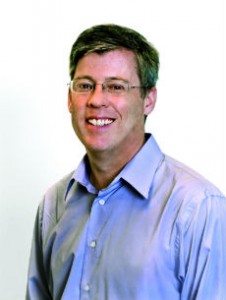 Pat Logan is Director of Project Finance in the New York office of Enterprise Community Partners, a nationwide nonprofit focused on creating opportunities for low- and moderate-income people through affordable housing in diverse, thriving communities.
Pat will be appearing at BE NYC on a panel titled “Real Financing, Real Quick (Financing for People With Short Attention Spans),” which is part of the conference’s Multifamily track. Pat’s scheduled co-panelists are: John Skipper from Con Edison; Lindsay Robbins from NYSERDA; Chris Diamond from NYC Energy Efficiency Corp.; Sadie McKeown from Community Preservation Corp.; Lou Rizzo from National Grid; and Jesse Elton from LISC.
Pat’s interest in financing affordable housing comes from his longtime commitment to the public sector. He attended Fordham University first as an undergraduate, then earned a master’s degree there in international political economy and development. This was followed by a stint as an 8th grade teacher at St. Elizabeths in Washington Heights and an after-school program instructor in the Fordham section of the Bronx, where he made connections that eventually led to a position on the development team of a local nonprofit, the Fordham Bedford Housing Corp. Pat remains active in local community affairs to the present, serving on the board of the Bronx County Historical Society.
We sat down with Pat and talked about how he hopes to contribute to his BE NYC panel’s mission to introduce the audience to various funding and grant opportunities for retrofits and/or audits leading to energy-efficient renovations:
(more…)
Pat Logan is Director of Project Finance in the New York office of Enterprise Community Partners, a nationwide nonprofit focused on creating opportunities for low- and moderate-income people through affordable housing in diverse, thriving communities.
Pat will be appearing at BE NYC on a panel titled “Real Financing, Real Quick (Financing for People With Short Attention Spans),” which is part of the conference’s Multifamily track. Pat’s scheduled co-panelists are: John Skipper from Con Edison; Lindsay Robbins from NYSERDA; Chris Diamond from NYC Energy Efficiency Corp.; Sadie McKeown from Community Preservation Corp.; Lou Rizzo from National Grid; and Jesse Elton from LISC.
Pat’s interest in financing affordable housing comes from his longtime commitment to the public sector. He attended Fordham University first as an undergraduate, then earned a master’s degree there in international political economy and development. This was followed by a stint as an 8th grade teacher at St. Elizabeths in Washington Heights and an after-school program instructor in the Fordham section of the Bronx, where he made connections that eventually led to a position on the development team of a local nonprofit, the Fordham Bedford Housing Corp. Pat remains active in local community affairs to the present, serving on the board of the Bronx County Historical Society.
We sat down with Pat and talked about how he hopes to contribute to his BE NYC panel’s mission to introduce the audience to various funding and grant opportunities for retrofits and/or audits leading to energy-efficient renovations:
(more…)

